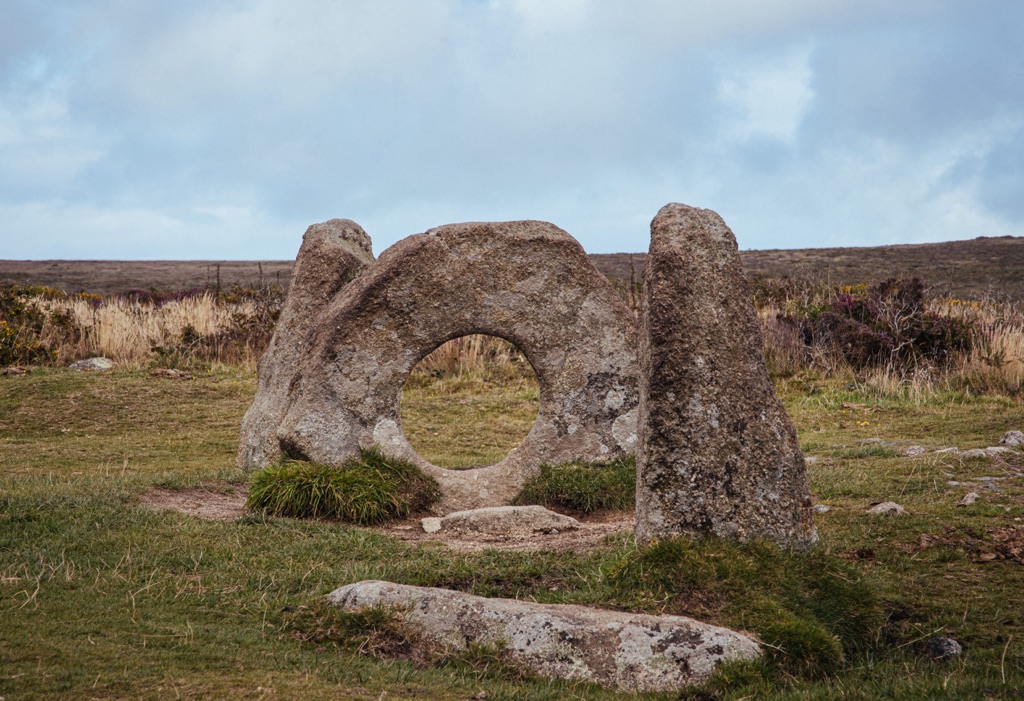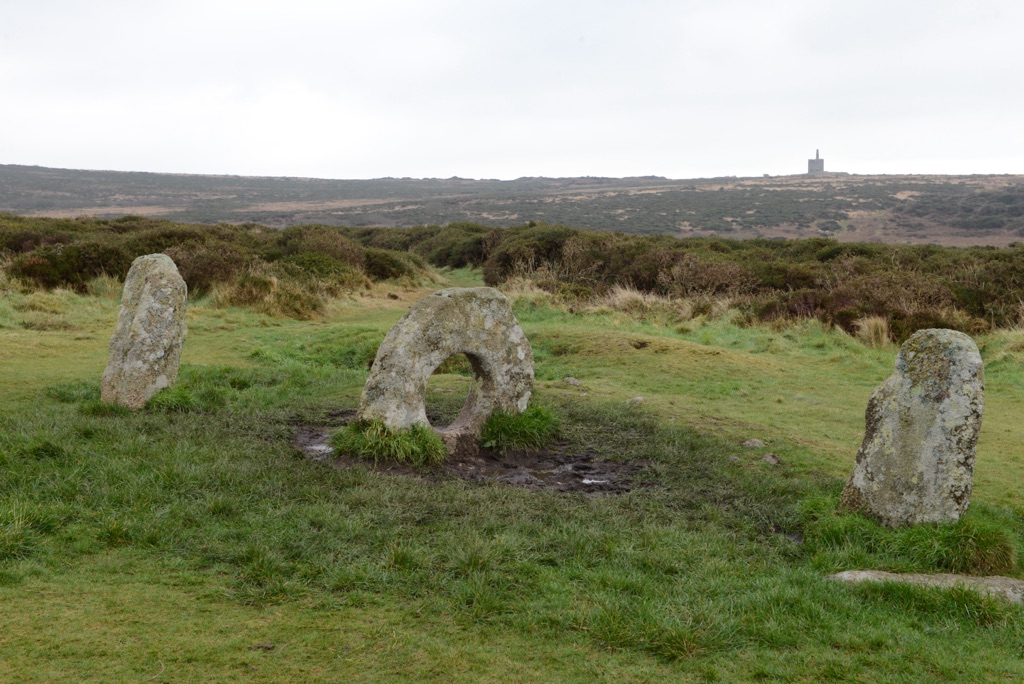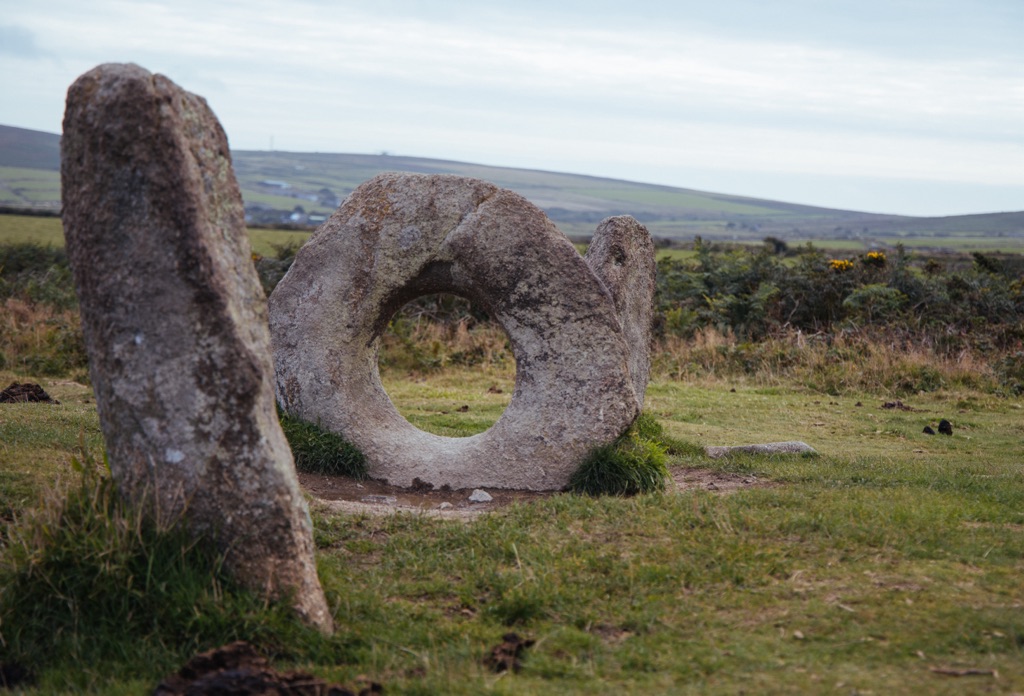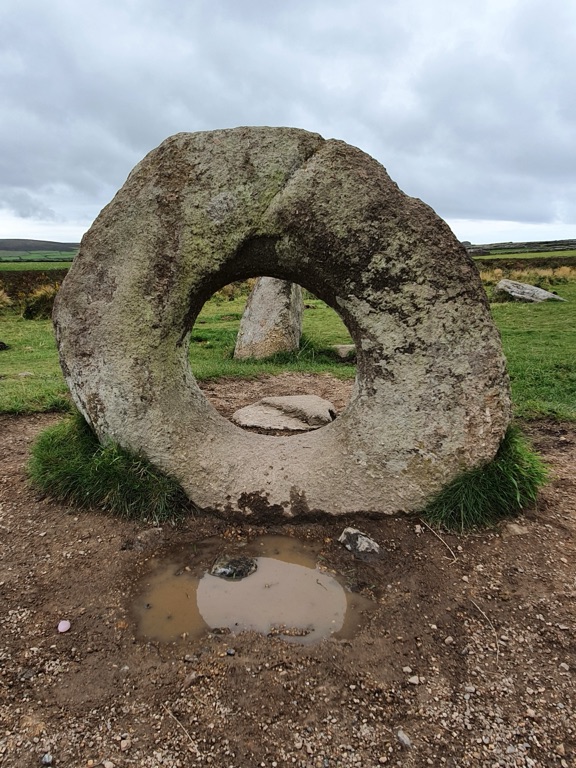The Mên-an-Tol in England is a small formation of standing stones located in Cornwall. Known for its iconic circular holed stone, it has intrigued visitors and researchers alike. The site’s purpose remains a mystery, but it’s believed to date back to the Neolithic or Bronze Age. The Mên-an-Tol stands as a testament to the region’s rich prehistoric past and continues to be a subject of folklore and archaeological interest.
Get your dose of History via Email
Historical Background of Mên-an-Tol
The Mên-an-Tol, with its distinctive holed stone, was first noted in modern times by antiquarians in the 18th century. William Borlase, a Cornish antiquarian, documented it in 1769. The site’s creators remain unknown, but it likely dates back to the Neolithic or early Bronze Age. Over time, the Mên-an-Tol has sparked curiosity and remains an archaeological enigma.
Excavations in the 19th century led by J.T. Blight suggested that the Mên-an-Tol might have been part of a stone circle or a tomb. The site consists of three main stones: two upright stones with the holed stone between them. The holed stone is the most striking feature and measures about 1.3 meters high. The site’s layout and the holed stone’s purpose have been subjects of much speculation.

Local folklore has imbued the Mên-an-Tol with various healing properties, particularly for rickets in children. The tradition of passing afflicted individuals through the hole as a form of ritual healing is well-documented. This practice indicates that the site may have held a significant place in the cultural and spiritual life of the local population throughout history.
The Mên-an-Tol remains protected as a Scheduled Ancient Monument, ensuring its preservation for future generations. Whilst its exact origins and purpose may never be fully understood, it stands as a captivating piece of Cornwall’s prehistoric landscape.

About Mên-an-Tol
The Mên-an-Tol consists of three main stones: a circular holed stone flanked by two upright stones. The holed stone, with a diameter of roughly 1.3 meters, is the centerpiece. It’s made of local granite and has a perfectly round hole at its center. The two standing stones are about the same height as the holed stone but lack any carvings or openings.
The construction methods of the Mên-an-Tol are typical of Neolithic or Bronze Age megalithic structures. The stones were likely sourced from nearby quarries and transported to the site. The precise method of creating the hole in the central stone is unknown, but it may have involved pecking and grinding with harder stones.
The architectural highlights of the Mên-an-Tol are its simplicity and the enigmatic nature of the holed stone. The arrangement of the stones suggests that they may have been part of a larger complex or ritual landscape. The site’s layout could have had astronomical, ceremonial, or funerary significance, as is common with megalithic structures from this period.

Despite its small size, the Mên-an-Tol is a significant landmark within the Cornish landscape. Its isolated location adds to the mystery and allure of the site. The surrounding area is rich in archaeological remains, indicating that the region was of importance to prehistoric communities.
Theories and Interpretations
Several theories about the Mên-an-Tol’s purpose have been proposed over the years. Some suggest it was part of a burial ground or tomb. Others believe it may have had an astronomical function, aligning with celestial bodies or marking significant dates.
Mysteries surrounding the Mên-an-Tol include the original configuration of the stones and the extent of the site. It’s unclear if more stones were present in the past or if the current stones have been rearranged over time. The site’s connection to other megalithic structures in the region is also a topic of interest.

Historical records provide little information on the Mên-an-Tol, leaving interpretations largely to archaeological evidence and folklore. The site’s age has been estimated through comparative dating methods, as direct dating of the stones is challenging.
At a glance
Country: England
Civilization: Unknown, likely Neolithic or early Bronze Age
Age: Estimated to be from 2500 to 1500 BC

I wonder if the circular rock with the hole in it was really a wheel, a form easier to roll a ton of rocks over a distance from the quarry to their homes, than to slide a 1-ton brick or to carry many smaller bricks. The one shown might be ceremonial and it had a hole in it to make it lighter, whereas the everyday circular rocks were smaller without a hole.
Very Interesting.
Thank you, from Ireland.
See Yap island in Micronesia Pacific Ocean. Massive Stones With center holes. Termed Money Stones.
See Old World Florida channel on YouTube. Stone Anchors. Massive Stones with drilled holes; not natural. All over Florida.
I contend the Yap inhabitants made the Money Stones to trade with Ancient Seafarers on Massive Ships. Look at the Ancient Civilization on other Micronesia islands.
Thank you. Appreciate this. I’m putting together a blog post on the Money Stones at Yap island.
Turn it inline with the other two and then stand up the behind it